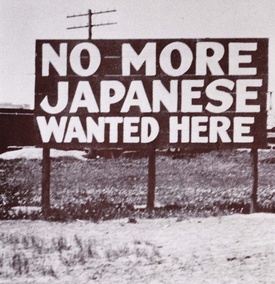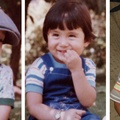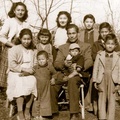BY WAY OF INTRODUCTION
When one starts to think about the characteristics presented by the descendants of those Japanese who for one reason or another ended up settling in America, one quickly ends up deducing that their similarities lie in the fact that we have all inherited a basic Japanese genetic pattern of tremendous persistence that resists the generational step, which can become recessive but always ready to emerge when circumstances demand it. (Examples in this regard are not lacking). Of course, from then on, pure differences! Mother America has been in charge of giving us her particular touch, making us “American Nikkei” but, not content with that, she has marked us with greater finesse depending on the country or region where we were born and became men (“Cuban Nikkei”, “Brazilian Nikkei”). ", "Peruvian Nikkei", etc.)... Let us remember that it was Mother Nature that defined the variants of men depending on the geographical place in which that original Paleolithic that originated in the heart of Africa left its seed. ( The human race is one ).
In our case, those primal fathers represented by the branch of the MONGOLS, after leaving their place of birth, dedicated themselves to traveling the planet from north to south, impregnating almost half of the women they found along their way. Of course, over the course of these hundreds and hundreds of centuries, those new human products suffered genetic adjustments according to the incorporations that wise Nature made to them according to the planetary place in which they were found. From there the Asian Mongoloids such as the Chinese, the Pakistani or the Japanese come into existence; the Australoids such as the Zeelandish or the Australian and the Amerindians such as the Eskimo, the Sioux or the Mapuche - the basis of the Chilean.
For the same reason, the geographical and environmental differences of the various American latitudes in which our lands, seas and skies are located; They made us different, but these differences were accentuated and refined when the cultural and historical variants that are specific to each place were added. With all this, we have no doubt that we are from this or that country, as if we had an indelible seal of sectoral identity printed on us... But, curiously, while our differences are refined, we see how the extremes come together. Thus we have, for example, that Japanese and Chileans are very close relatives.

THE SOCIO-POLITICAL REALITY OF JAPAN AT THE TIME OF THE DEPARTURE OF THE FIRST JAPANESE TO ARRIVE IN CHILE
To begin with, let us establish that these advances who set foot on Chilean soil were not official immigrants. Not even migrants. More like young adventurers who wanted to know something about this New World and not all of them turned out well. We are talking about a generation of Japanese from the beginning of the 20th century and born at the end of the 19th century, strongly influenced by the prevailing militaristic regime and by that nationalist culture harshly regulated by the long “ sakoku ”. (Isolation of Japan from foreign harassment between 1641 and 1854 implemented by the Tokugawa shogunate).
But, these adventurers of recent adulthood or approaching it belonged to the Meiji era. That crucial historical moment in which Japan is changing its old agricultural medieval skin for another with a metallic shine, similar or better than that worn by the countries of Europe or the United States. To achieve this, it has not hesitated to dismantle a good part of its traditional structures so that all the nation's resources are channeled towards the development of an industrialization full of modernity, forming a large imperial army in the Franco-Prussian style and opening up to the world. for purposes of friendship and trade. Hence, the lands of the “ daimyo ” have now become part of that hegemonic empire, the laws have been modified, the samurai class is now a thing of the past and the families with greater resources have become part of an enlightened petite bourgeoisie. (while ancient agriculture languishes dangerously). Let everything be done to save the Empire from foreign dependence.
The destinies of men are being changed overnight. The samurai, for example, have taken diversified paths. Some became landowners because many had land for inheritance or for warrior reward, others opened martial arts schools, others became bandits or retired to monastic life or committed suicide or managed to become successful merchants.
In any case, Japanese life tended to relocate to its new lanes while solutions were sought for those many thousands of uprooted peasants and artisans replaced by machines, still without a place in this world turned 180°. One of these solutions was to resort to those new international relations of friendship and trade where the first colonies of Japanese emigrants were already beginning to settle, such as in the United States, Canada and Mexico. Then Peru will follow in 1899 and Brazil in 1908.
In the case of Chile, in 1897 the Treaty of Friendship, Commerce and Navigation was signed and with the new century consular talks began to bring some of these colonies, but such talks took dilatory courses that never reached any port. In 1924, useless attempts continued to be made, now at the embassy level. The last of these attempts was made in the 1950s when the American brotherhood made manifest efforts to help Japan devastated and harassed by a thousand-faced misery (total defeat in the Pacific War), bringing colonies of workers to their respective countries. Japanese. Of course, the offers presented by the Japanese embassy in Chile did not receive a response...
FOUR SUPPOSED CAUSES THAT GAVE FIGURE AND PRESENCE TO XENOPHOBIC SCENARIOS IN CHILE
- Defamations against Japanese immigrants located in California (USA) and Peru. Both were identical in their content: the Japanese were dispossessing the locals of their land using crafty competitive practices. What were these? Simply what any Japanese always does.
First, they demanded compliance with the working conditions established by their immigration contracts (act of justice - “ gi ”) and later, when fulfilling their official commitments, each family worked from dawn to dusk on rented lands, obtaining high returns from their crops both quantitatively and qualitatively, achieving preferences in sales markets. Then they continued doing it on lands that they became their own.
Protests multiplied and expulsions were demanded. The United States closed its borders to Japanese immigration and purchased advertising did the rest. Of course these voices reached Chile and the owners of the land and power quickly joined in the rejection. - The efforts of the Japanese government to bring immigrant colonies to Chile. The discredit became hysterical to be able to “save the country” from such a disastrous invasion. In 1906, in the Bulletin of the National Agricultural Society No. 32 you can read:
“… (It is alleged) that the Japanese are not the Chinese… but when it comes to immigration, that is, to inoculate the country with a new germ, to bring people who must remain firm, to mix blood, habits, ideas and tendencies; Chinese and Japanese turn out to be the same; They are the yellow race with its physical disadvantages and its moral aberrations.”
Shortly afterwards, in the Senate minutes, the same ideas are found coming from the same brains:
“It is a race that multiplies in geometric progression such that a thousand families would produce serious demographic issues and conflicts of all kinds and nature in the short term. "It would therefore constitute a serious danger for Chile."
These xenophobic campaigns were stubbornly applied in the mining north at the beginning of the 20th century with invented waves of Japanese immigrants that would displace locals from their sources of work. However, this fraudulent planting did not achieve the expected results. This unhealthy desire to negatively predispose the people against the Japanese continued in the central zone in a hidden form until the 1950s, but was clearly explicit during the years of the Pacific War (1941/45). Despite this, they were not able to get the majority of the population to join their purchased hordes. - The fear of group Japanese. The imaginaries that ran around a deceitful two-faced Japanese. On the one hand, the solitary Japanese: calm, hard-working, honest, respectful, harmless. On the other hand, the group Japanese: faithful to his pack, bellicose, without fear of death, devastating. Fanciful image of those armies that invaded Korea in 1894, then China, Formosa and finally Russia in 1904/5.
- The effective and historic commitment to continue favoring and facilitating the immigration of Europeans tainted by their wars and revolutions. Rather, to any “white race” group, prototype of that which the Creole admired and served since the Conquest. (Hence the Chilean's persistent desire to hide his roots and attach himself to the white foreigner and everything he represents).
© 2016 Ariel Takeda






